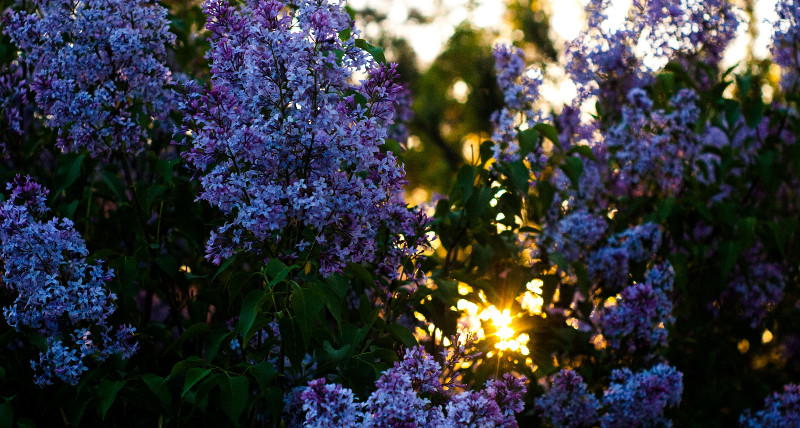The common lilac, Syringa vulgaris, blooms during the springtime months. Lilacs grow in the U.S. Department of Agriculture plant hardiness zones 3 through 9. Lilacs are a hardy, easy to grow, low maintenance flowering shrub. While lilac shrubs are fairly easy to grow and maintain, there may come a spring when you find that your lilacs have not bloomed. It can happen. When a lilac bush is not blooming, it means there are a few things to investigate, so let’s explore the issues.

Many times, young lilac shrubs can take up to a couple of years to mature and grow strong blooms. Providing proper support and nurturing your plant will pay off in the long run. How and where you plant your lilac is important for bountiful blooms. You will need a sunny, well drained spot for your lilac. Yearly pruning and very little fertilizer will ensure your lilac blooms year after year.
Common Reasons Why Lilacs Aren’t Blooming
The common lilac, (Syringa vulgaris) is a perennial flowering shrub that produces full purple, pink, or white blooms. Despite being a reliable bloomer, it is not uncommon for lilac bushes to suddenly stop blooming. It is important to discover why your plant stopped blooming and remedy the problem so the lilac will resume blooming the following spring.
1. Growing conditions: Lilacs like a slightly alkaline soil (pH6-7), at least 6 hours of full sun daily, and even moisture. So, if you have soil with too much acid, not enough sunlight, or a dry summer while buds are forming- you might get few or no blooms.
2. Pruning: Lilacs bloom on the previous season’s growth. They develop next year’s buds shortly after blooming in the spring. Pruning is best when done right after spring blooms die off. If you wait until summer, fall or winter to prune a lilac, you could be removing buds that would otherwise bloom the following spring
3. Lilac age: Lilac plants bloom best on younger wood (5 or 6 years old). If your lilac wood is primarily old wood, the number of blooms will be fewer. You will need to do a rejuvenation pruning on the bush.
4. Weather: A dry spring when the shrub is in it’s prime growing time can affect the production of blooms. Lilacs can handle the cold better than most flowering plants. But if the buds were hit hard by frost or snow, they may not bloom.
Fertilizing: Generally, lilac shrubs do not require many nutrients. Too much fertilizing can cause a lilac to take up too much nitrogen, which keeps the lilac bush from blooming. This can cause your shrub to produce more leaves and branches, resulting in less blooms.
Container lilacs: Lilacs bushes can grow in containers. They will need to be planted in a large container that gives the roots a lot of space to spread out. A lilac planted in too small of a container will fail to bloom.

Does Pruning Lilacs Help Them Bloom?
Pruning your lilac bush is one of the best things a gardener can do to promote plentiful blooms. Yearly pruning helps to develop a good set of new stems and promotes enhanced flowering. Lilacs bloom on last year’s growth and on newer wood. It is important to prune them right after they have finished blooming for the spring.
Pruning at the right time is key. In early spring, a light pruning is best. Thin out the old, damaged, dead, and thick branches. After the flowers have bloomed and faded is the time to do a major pruning. Deadheading your shrub creates a balance between older stems and newer, flowering shoots. Simply snip off the dead blooms.
Does Fertilizing Help Lilacs Bloom?
The common lilac, (Syringa vulgaris) is an easy to care for flowering plant. Giving the plant the right growing conditions is about all the care it needs. Lilacs do not require much in the way of fertilizer except for light feeding of fertilizer that is low in nitrogen and high in phosphorus to promote flowering. in the spring. If you regularly fertilize your lawn or other plants nearby, your lilac could actually be getting too much fertilizer. Over fertilizing lilacs will grow a lot of greenery, but will not give you more blooms.
How Do I Get Lilacs To Produce More Blooms?
Lilacs grow best in slightly alkaline (6.5 to 7.0 pH), moist, well-drained soil. Fertilizing your lilac too much can have a negative effect on blooming of your plant. Too much nitrogen in the soil can result in poor blooms.
One way to promote flowering is to add cow manure into the soil. Another trick to speed up flowering is using Epsom salt once per month on your lilac plant. Fill a bucket with a gallon of water, and stir in two ounces of Epsom salts. Pour this solution onto the plants.
Old, neglected lilacs can be rejuvenated by pruning. Removing the old dead flowers from your lilac shrub will encourage more blooms the following year.

Why Isn’t My Lilac Blooming
- Too much fertilizer
- Too much water
- Too small of container
- Pruning at the wrong time
- Too much nitrogen in the soil
- Lilac age
- Not enough sun
- Late freeze damage to the blooms
 |
Author Chris Link - Published 12-16-2020 |
